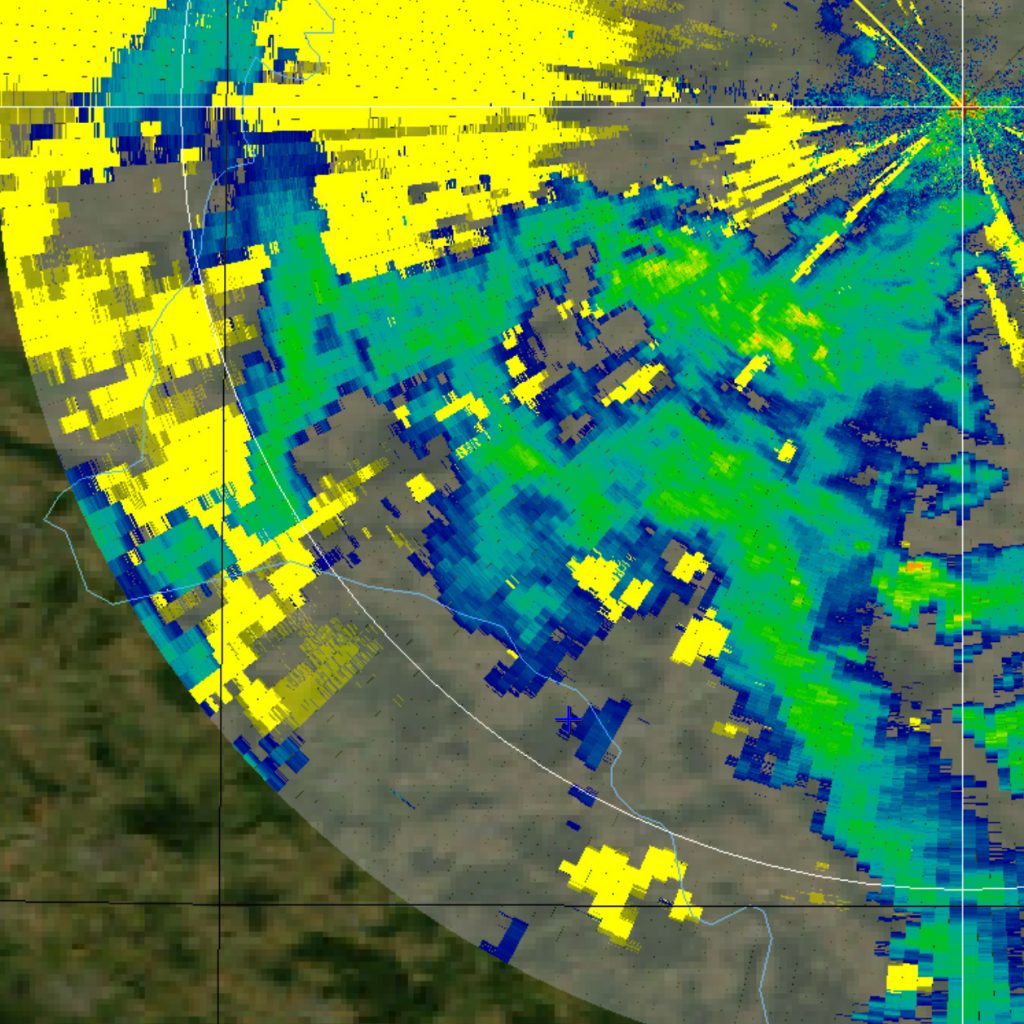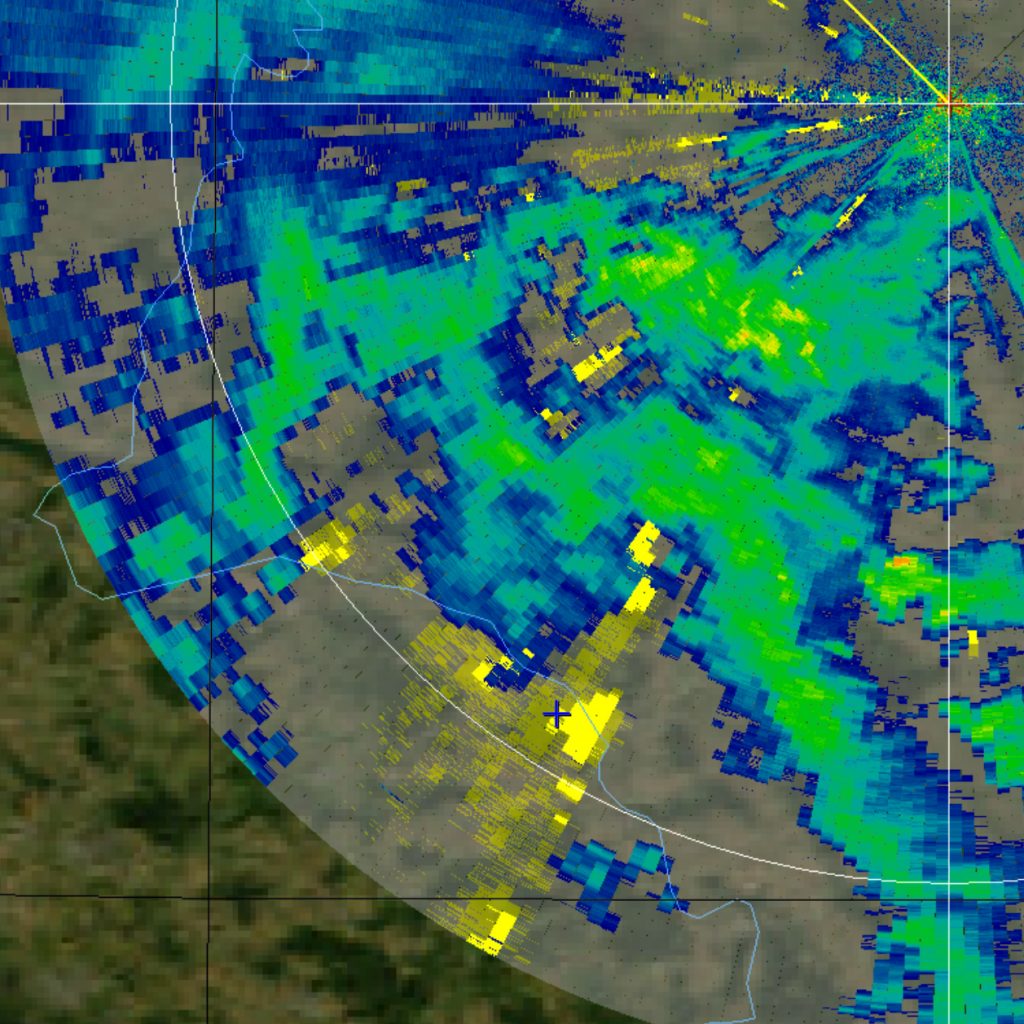Latest generation of the powerful weather radar signal processor
ENIGMA V is the latest generation of the popular and advanced weather radar signal processor for single and dual polarization developed by GAMIC. It consists of a host (ENIGMA PC) and a completely redesigned IFD (Intermediate Frequency Digitizer). The IFD converts your radar output to a stable and high quality digital signal while the host provides clean output data by applying powerful algorithms and corrections.
The next generation of signal processing
The ENIGMA V signal processor is suitable for magnetron, klystron, or solid-state radars. In case of coherent-on-receive radars, the IFD is able to measure the IF frequency and apply an AAFC (Adaptive Automatic Frequency Control) for proper reception. A sliding window matched filter reduces STALO-control activity to a minimum, resulting in an improved estimation of coherent physical moments.
ENIGMA V is the perfect match for solid-state weather radars. Thanks to its massive processing power and improved waveform generation ENIGMA V can perform pulse compression with much more complex signal coding/decoding and solid-state pulse schemes. Pulse compression is a radar technique that combines the advantages of long and short pulses. ENIGMA V uses NLFM (Non-linear Frequency Modulation) technique in order to reduce side lobe levels and improve range resolution. This is critical for weather radar systems due to the high dynamic range requirement. Additionally, a frequency-diversity pulse scheme is implemented to avoid contamination of echoes of the different subpulses. ENIGMA V has four real or two complex waveform generators which are freely programmable (up to 900 MHz sampling rate), allowing optimal pulse waveform to improve ground clutter suppression and weather detection while reducing false detection of weather echoes.
Get the best out of any weather radar
The IFD V controls the transmit timing of the connected radar by applying trigger signals and performing the data acquisition accordingly. It comes with six input channels: two horizontal, two vertical, and two burst (transmit signal / reference) which enable full dual polarization capability. The IF signal is digitized at an intermediate frequency of 60 MHz (others optional) and the radar echo data is tagged with corresponding time and elevation/azimuth angle information. For optimum sensitivity and dynamic range a digital filter is applied which matches the transmitted pulse length perfectly.
The generated raw echo data is provided to the host PC through an optical fibre connection of 10 Gbit/s for further processing. Maintenance and control are improved with even more BITE information (monitoring of input signals, temperature values, supply voltage, etc.), accessible remotely and via a USB connection or 1 Gbit/s ethernet port.

Compact form factor and improved rack mount
The ENIGMA V signal processor comes with a complete hardware redesign. The new IFD V is available as an easily integrable and flexible version (e.g. for head-mount installations) or as an improved and shorter 19“ rack mount version with high efficiency (power consumption <50 W) and focus on reliability optimizations, such as cooling, utilization of conductive polymer electrolytic capacitors, electrostatic discharge protection, and supply voltage distortion filtering.


Powerful processing and correction algorithms
Digital Doppler velocity processing enables more accurate velocity data and better clutter mitigation. The velocity based clutter filters provide more than 50 dB clutter rejection, resulting in less ground clutter. Dual polarization based rain and gas attenuation correction are inevitable for reliable rain rate retrievals, especially for sensitive X-band radars. Further data improvement features comprise the removal of multi-trip echoes, RF interferences, and sun spokes.




ENIGMA V is highly configurable, including speckle remover (via reflectivity, velocity, spectrum width, or dual polarization moment), thresholding (NOISE, CCOR, SIGPOW, RHOHV, SQI), and KDP interpolation. The following efficient ENIGMA software algorithms ensure best data quality and reduce disturbances:
- Fuzzy logic classification and flagging of range gates for ground clutter, multi-trip echoes, RF interference, and sun spokes
- Improved random phase multip-trip detection and mitigation
- Adaptive clutter filtering
- Additional output moments (clutter phase alignment, standard deviation, SQI, 2nd/3rd trip, classification flags, real and complex cross spectrum)
- Improved thresholding including the new classifier flags
- Wind turbine clutter detection algorithm
NEW: Wind Turbine Clutter Detection

Everyday more wind turbines are installed within the range of radar systems. An increasing problem appears in the evaluation of weather radar data due to dynamic wind turbine clutter (WTC).
Addressing this problem, ENIGMA V has a built-in WTC detection algorithm. The example images show detected wind turbines as black pixels while original wind turbine locations are marked purple. GAMIC’s WTC algorithm is operationally used by a major national weather service.
Comprehensive output moments
Besides typical single polarization radar moments reflectivity (Z), radial velocity (V), and spectral width (W), ENIGMA V provides output of enhanced dual polarization moments which are essential for any contemporary processing and further usage of weather radar data. The output moments include ZDR, KDP, RHOHV, PHIDP, and many more. All radar moments are provided uncorrected and corrected.
For a comprehensive data quality and signal analysis, ENIGMA V serves output variables like signal-to-noise ratio (SNR), signal quality index (SQI), clutter power (CCOR), power spectrum (DFT), and more. For a non-exhaustive list of all ENIGMA V output moments and further details, consider the ENIGMA V datasheet.
Check out our weather radar software suite Frog-Muran for generation of meteorological products and further data analysis tools.
